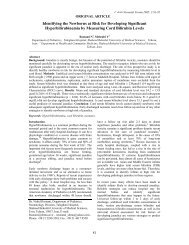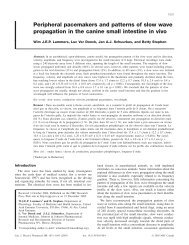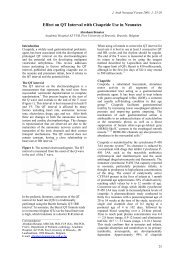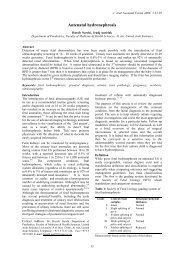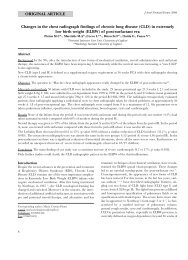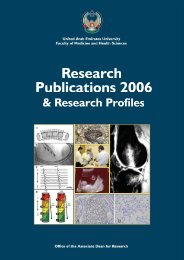Research Profile - College of Medicine and Health Science - United ...
Research Profile - College of Medicine and Health Science - United ...
Research Profile - College of Medicine and Health Science - United ...
You also want an ePaper? Increase the reach of your titles
YUMPU automatically turns print PDFs into web optimized ePapers that Google loves.
Department <strong>of</strong> Anatomy<br />
<strong>Research</strong> <strong>Pr<strong>of</strong>ile</strong><br />
Academic staff in the Department <strong>of</strong> Anatomy<br />
pursue research interests in a number <strong>of</strong><br />
directions. We show considerable strength in the<br />
fields <strong>of</strong> neurobiology, stem cells, cancer, diabetes,<br />
<strong>and</strong> structure/function relations.<br />
<strong>Research</strong> by<br />
Eric Mensah-Brown has continued to be focused on the<br />
mechanisms underlying autoimmune type 1 disease <strong>and</strong> the<br />
role <strong>of</strong> microglia in experimental allergic encephalomyelitis (EAE).<br />
Together wih collaborators in the Medical Microbiology <strong>and</strong><br />
Immunology Department, we have shown that different<br />
mechanisms regulate autoimmunity in C57BL/6 <strong>and</strong> BALB/c mice.<br />
Using the multiple low dose streptozotocin model <strong>and</strong><br />
cyclophosphamide, we have shown that whileT regulatory cells<br />
prevent disease in C57BL6 mice, they are completely ineffective<br />
in controlling diabetogenesis in BALB/C mice which seem to be<br />
controlled by the ST2/IL-33 paradigm <strong>of</strong> disease. The latter was<br />
demonstrated by showing that diabetes developed in normally<br />
resistant BALB/c mice after deletion <strong>of</strong> the ST2 gene. We have also<br />
demonstrated in rats that macrophages <strong>and</strong> dendritic cells, but<br />
not microglia, are antigen presenting cells in EAE. We contend that<br />
microglia remain as protective cells in the central nervous system.<br />
Pr<strong>of</strong>essor & Chair:<br />
Pr<strong>of</strong> G Buzzell<br />
Pr<strong>of</strong>essor:<br />
Pr<strong>of</strong> E Adeghate<br />
Pr<strong>of</strong> S Karam<br />
Pr<strong>of</strong> DE Lorke<br />
Associate Pr<strong>of</strong>essor:<br />
Dr E Mensah-Brown<br />
Dr S Shehab<br />
Medical <strong>Research</strong><br />
Specialist:<br />
Mr RS Hameed<br />
Dr RR John<br />
Ms A Rifaat<br />
Mr S Singh<br />
Mr S Tariq<br />
Mr W Wanniarachi<br />
Medical<strong>Research</strong><br />
Technician:<br />
Mr M Madathil<br />
Secretary:<br />
Ms L Ravindranathan<br />
Office Assistant:<br />
Mr TV Basheer<br />
Micrographs showing immunoreactivity to dendritic cells 14 days after disease<br />
induction in DA rats (Grade 3 disease) (a) <strong>and</strong> their absence in AO rats (b), which do<br />
not develop EAE.




